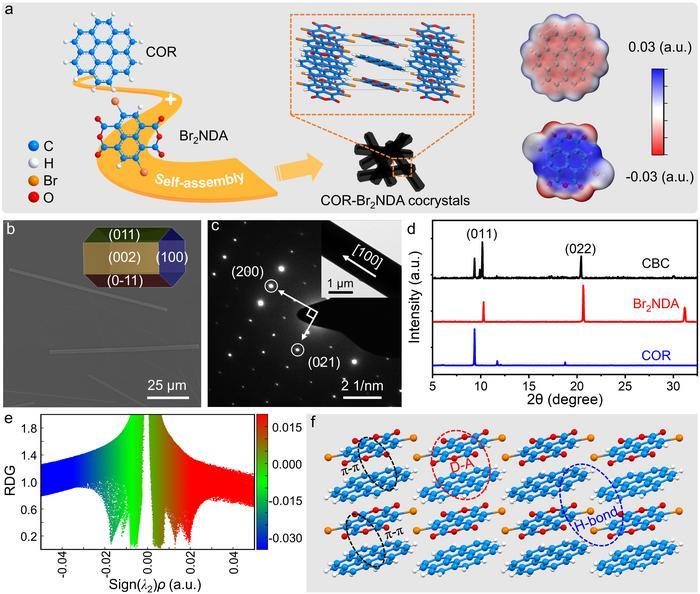| IN A NUTSHELL |
|
In a groundbreaking advancement in the field of energy conversion, scientists have developed novel organic photothermal cocrystals that substantially improve the efficiency of solar thermoelectric generators (STEGs). This innovation not only paves the way for smarter wearable electronics and next-generation energy devices but also holds the potential to revolutionize long-distance signal transmission. With the collaboration of researchers from several prestigious Chinese universities, this development marks a significant leap forward in harnessing solar power more effectively.
Breakthrough in Photothermal Materials
Recent studies have highlighted major advancements in solar thermoelectric generators (STEGs), with photothermal materials taking center stage. These materials, which include carbon-based compounds, metal oxides, polymers, and phase-change materials, have proven to be effective in creating the temperature gradients necessary for efficient energy conversion. The latest research introduces an organic photothermal cocrystal known as coronene-Br2NDA (CBC), which showcases exceptional light absorption and heat conversion capabilities.
A team from Nanchang University, Soochow University, and Nanjing University has utilized the open-shell radical Br2NDA as an electron acceptor to design and synthesize this innovative cocrystal. When coronene and Br2NDA are combined, they self-assemble into needle-like microrods, forming a highly crystalline structure. This structure demonstrates near-complete photoluminescence quenching, indicating efficient nonradiative energy transfer, and sets a new benchmark for photothermal materials.
Outstanding Photothermal Performance
The CBC cocrystal’s performance under light exposure is nothing short of astonishing. According to Sheng Zhuo, the study’s lead author from Nanjing University, the cocrystal reached a temperature of 186.6 degrees Fahrenheit within seconds when exposed to 808-nanometer near-infrared light. This rapid heat conversion is accompanied by a photothermal conversion efficiency (PCE) of 67.2 percent, which surpasses many previously reported organic photothermal materials.
Through a series of sophisticated analyses, including X-ray diffraction and UV-Vis absorption, researchers have provided compelling evidence of strong charge transfer interactions between the components of the cocrystal. The material absorbed light across a wide spectrum and exhibited a significant redshift, further underlining its efficiency. These findings reveal the potential of CBC to revolutionize the field of energy conversion, setting the stage for future innovations.

Potential Applications
The real-world applications of the CBC cocrystal are vast and impressive. By embedding the cocrystal into a transparent resin, researchers created a photothermal ink that was applied to the surface of a thermoelectric generator. Under simulated solar irradiation equivalent to two suns, the CBC-coated generator reached a temperature of 158.54 degrees Fahrenheit and achieved a voltage output of 209 mV, marking a 375 percent increase compared to an uncoated generator.
Furthermore, the cocrystal’s capabilities extend to light-based communication. Researchers successfully modulated laser beam intensity and duration to send encoded signals, such as Morse code, through near-infrared light. This breakthrough suggests promising applications in non-contact data transmission, wearable encryption systems, and adaptive electronics. The simple synthesis process and exceptional thermal and electronic performance make this technology a scalable and cost-effective solution for integrating organic materials into advanced solar thermoelectric systems.
Implications for Future Energy Systems
The implications of this research extend beyond academic interest. As the demand for off-grid, wearable, and smart energy systems continues to grow, radical photothermal cocrystals like CBC could play a crucial role in transforming light into power and power into new possibilities. By offering a scalable and efficient path for solar energy conversion, these materials have the potential to drive significant advancements in sustainable energy technologies.
The study, published in the journal National Science Review, emphasizes the transformative potential of these cocrystals in reshaping the landscape of energy conversion. As the world moves towards more sustainable and efficient energy solutions, innovations like CBC cocrystals could become integral to future energy systems.
With such promising developments in solar energy technology, one might wonder: what other groundbreaking innovations lie on the horizon in our quest for sustainable and efficient energy solutions?
Did you like it? 4.5/5 (21)






Wow, 67% efficiency? That’s insane! Is this tech ready for commercial use yet? 🌞
This sounds like a game-changer, but what about the cost? Will it be affordable for everyone?
Can we expect to see these cocrystals in our smartphones soon? 📱
I’m skeptical about these claims. Is there independent verification of these results?
Great work, China! Leading the charge in renewable energy. Thank you! 🇨🇳